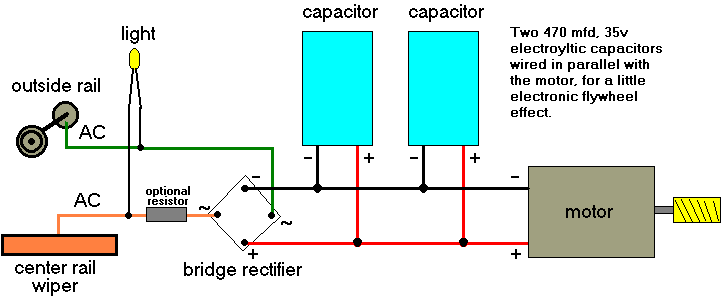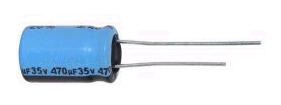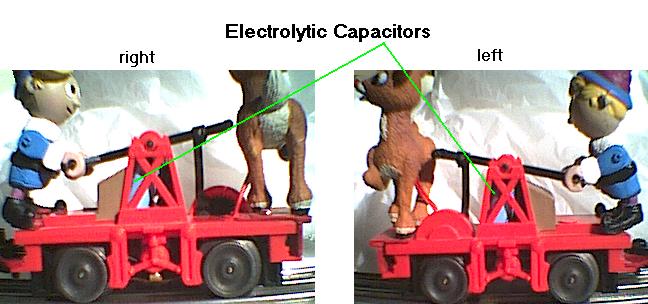

Although the flywheel effect is minimal with the smaller capacitors, no trailing car is needed, and the benefits are worth the effort. Running is very smooth and some track problems are eliminated. Depending on the physical size of the capacitors, values can be increased for a better effect. Yes, they barely fit, but take your time to carefully arrange the wiring! Two 470 mfd, 35V electrolytic caps in parallel were used. Try to fit as much capacitance as possible into the tiny space inside (notice the blue capacitors in the photos below). When operated on AC, the handcar will now run faster than before, so a power resistor (10 ohms, 1 watt or better) may be added to the lead coming from the center rail wiper into the rectifier (or use the lowest throttle setting from the transformer). Or run the handcar on DC when you can, for the usual speeds. Be sure to connect these polarized capacitors correctly or they will explode! Protect eyes, face, and fingers while testing all circuits!


The site owner is not and cannot be held liable for fire, electrical shock, property damage, bodily injury, loss of life, or accident of any kind caused by electrical circuits or any ideas, projects, techniques, or information contained on this site.
The visitor assumes all risk and responsibility for any loss, injury, accident or damage arising from the use of information, ideas, techniques, projects, concepts, components, products, and circuits on this site.
Please refer to hobby reference materials for correct and safe use information
regarding these and all electronic circuits. These diagrams are intended to explain how things were accomplished in theory, but it is the
responsibility of the individual to locate precise information regarding electrical circuits, materials, ratings of components, etc. Do not attempt
these hobby projects, or any electrical project, if you don't have the necessary skills and experience.